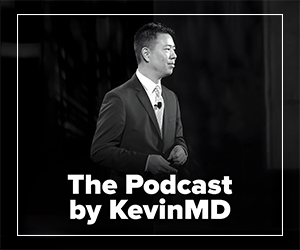Residency interview season is wrapping up; applicants and programs are weighing each other’s relative flaws and merits. In about a month, rank lists are due, and then the applicants’ fates are up to the Match. Where they will spend the next three to seven years of their lives, the people with whom they will work 80-plus hours per week, and the culture in which they will be steeped will be determined by the almighty algorithm of the National Resident Matching Program.
Most applicants are interested in matching at a program that is accredited by the ACGME (Accreditation Council for Graduate Medical Education), a private not-for-profit organization that accredits medical training programs in the United States. Programs are beholden to the common requirements devised by the ACGME, which include everything from how many hours a resident may work per week to the qualifications their faculty members must have to the number of procedures a trainee must perform to be considered competent. The ACGME’s mission is to improve the quality of graduate medical education and, in doing so, to improve patient safety.
The ACGME has been focusing on diversity, equity, and inclusion (DEI) since 2019, when a dedicated Department of DEI was created to study the subject and provide resources to programs and institutions. All graduate medical education training programs have been required to engage in practices promoting a diverse and inclusive workforce since that time. But how does the ACGME know if and how well this is happening?
The annual ACGME survey, arguably the most important external measure of a residency or fellowship program’s wellness, is sent to all trainees each spring. Program directors wait impatiently for the results, wondering if their programs will be dinged by an “area for improvement” or a “citation.” Such blemishes may invite site visits, probationary status, or—worst of all—loss of accreditation.
Although program leadership is never privy to the exact questions asked on the survey, general categories and themes are included in the survey report. In 2024, one of the categories was diversity and inclusion. The following sub-sections were rated by trainees:
- Preparation for interaction with diverse individuals
- Program fosters inclusive work environment
- Engagement in program’s diverse resident/fellow recruitment and retainment efforts
Nationally, over 90 percent of trainees agreed that their programs were meeting the ACGME’s diversity and inclusion requirements in 2024. On January 28, 2025, ACGME leadership issued a statement that they have no plans to modify their requirements regarding a diverse and inclusive workforce.
Our program’s website used to have a page titled “Inclusivity and Care.” Even though the page is gone, we want and need diversity and inclusivity. Patient outcomes are better when patients identify with their physicians. Representation matters: It allows youth of all backgrounds to imagine their own future careers in health care.
During interview season, during the 23 half-day sessions and the 92 one-on-one interviews, I was asked this question more commonly than any other: “What about this program makes you the proudest?”
Applicants from diverse backgrounds all asked the same question, and I gave them all the same answer: “I am most proud of the people.”
I then went on to explain that I am proud of each of our residents; that it is a privilege to watch their stunning growth occur in real time—the transformation of shy, scared interns into competent, confident residents; that watching each new class become a family and care for each other is my favorite part.
Our residents care for each other regardless of citizenship, gender, race, or sexual orientation. They care for their patients with the same inclusivity and compassion. They are inspiring, and they give me hope for the future.
Lisa Sieczkowski is a pediatrician.
























![Pediatric respite homes provide a survival mechanism for struggling families [PODCAST]](https://kevinmd.com/wp-content/uploads/Design-1-190x100.jpg)
